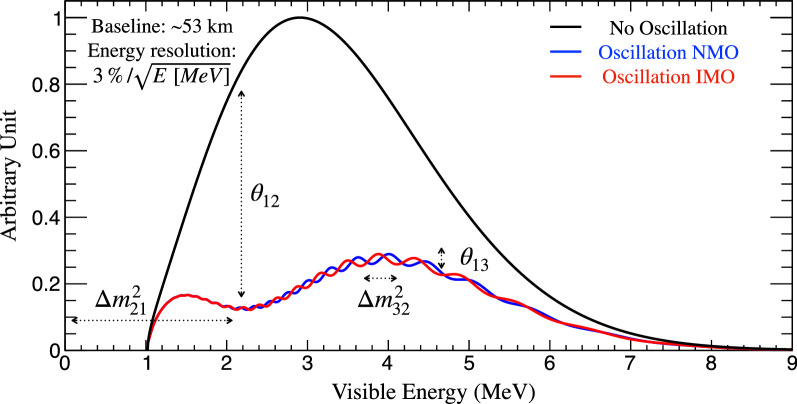Figure 1.
JUNO neutrino bi-oscillation spectral distorsion. JUNO was designed to exploit the spectral distortions from two oscillations simultaneously manifesting via reactor neutrinos in a baseline of 53 km. and drive the slow and large amplitude ( 42%) disappearance oscillation with a minimum at 2 MeV visible energy. The fast and smaller amplitude ( 5%) disappearance oscillation is driven by and instead. The oscillation frequency pattern depends on ’s sign, thus directly sensitive to mass ordering (MO) via only vacuum oscillations. JUNO’s high statistics allow shape-driven neutrino oscillation parameter extraction, with minimal impact from rate-only systematics. Hence, high precision is possible without permanent reactor flux monitoring, often referred to as near detector(s). JUNO’s shape analysis relies on the reactor reference spectrum’s excellent control, implying high resolution, energy scale control, and a robust data-driven reference spectrum obtained with TAO47, a satellite experiment of JUNO. The here presented plot is for illustration purposes and the neutrino oscillation parameters are taken from NuFit5.0 (Table 1).

